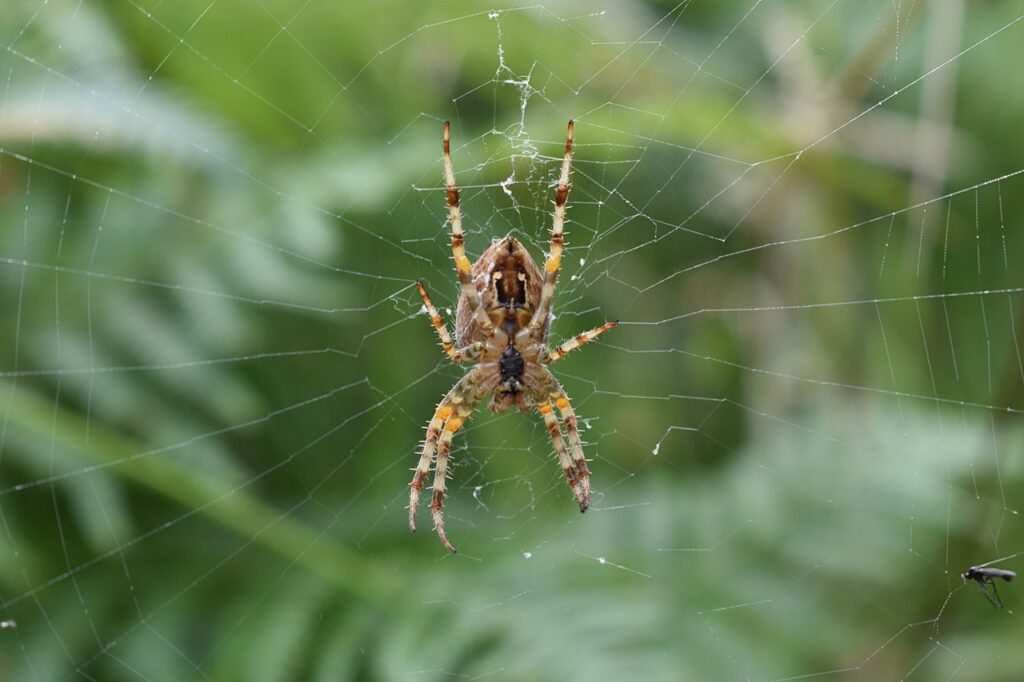
Appearance
The orb weaver family of spiders (Araneidae) is well-known for their distinctive circular webs, often resembling a “bull’s eye.” These webs can be found in various locations, including near lights, windows, and doorways, where flying insects are likely to encounter them. Orb weavers can vary significantly in size, with some species becoming quite large. Typically, these spiders are most active at night, hiding during the day and diligently rebuilding their webs in the evening.
Habitat and Behavior
Orb weavers often construct their webs in sheltered locations, making them common in gardens and around homes. While they are generally harmless, they can become a nuisance in high-rise buildings, where they may spin webs across balconies and sliding glass doors. Their webs are intricate and can be quite large, sometimes measuring several feet in diameter.
Orb Weaver Diet and Hunting
As carnivorous predators, orb weavers primarily feed on insects that become ensnared in their sticky webs. Once an insect is caught, the orb weaver quickly immobilizes it using venom injected through its fangs. After the prey is subdued, the spider secretes digestive enzymes to break down the internal tissues, allowing it to suck up the liquefied nutrients. This efficient feeding method enables them to thrive in areas abundant with insect life.
Life Cycle and Reproduction
The life cycle of orb weavers begins when a female lays her eggs in a silk sac, often hidden in foliage or sheltered areas. The young spiderlings typically emerge in late spring or early summer, dispersing to find suitable locations to establish their own webs. Most orb weavers live for about a year, although some may survive through multiple seasons in favorable conditions.
Control and Prevention
To manage orb weaver populations, it is essential to minimize their access to indoor spaces. Regular cleaning, including dusting and vacuuming corners and windows, can help remove webs and prevent their establishment. Additionally, removing clutter and debris from yards and gardens can reduce potential nesting sites. If control is necessary, outdoor treatments using residual insecticides may be effective, particularly in areas where webs are frequently found.
While orb weavers contribute to the ecosystem by controlling pest populations, their presence can be unwelcome in certain environments. Understanding their behavior and implementing preventive measures can help maintain a comfortable living space while allowing these fascinating spiders to thrive outdoors.
Orb Weaver Conclusion
Orb weaver spiders are remarkable creatures that play a vital role in controlling insect populations. By learning to identify them and understanding their habits, homeowners can manage their presence effectively while appreciating their contribution to the ecosystem.
Don’t let orb weavers take over your space! Visit our pest control section for strategies to keep your home spider-free.
